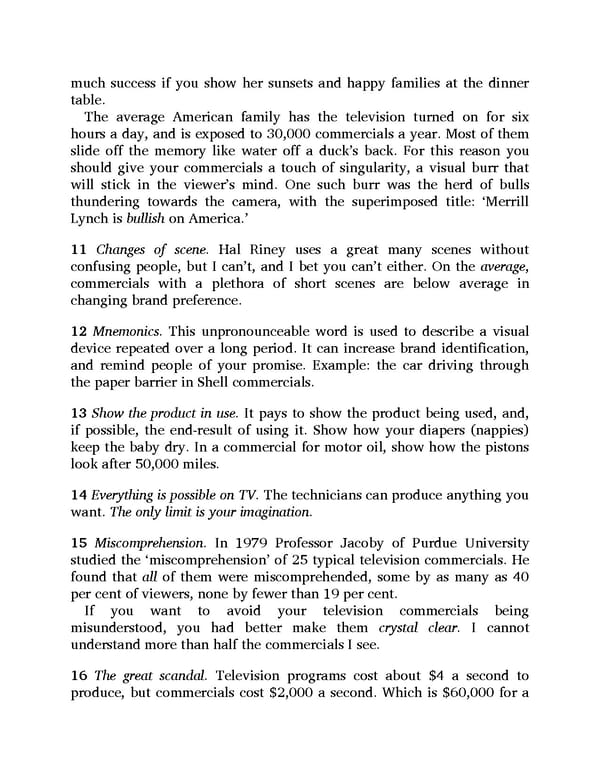much success if you show her sunsets and happy families at the dinner table. The average American family has the television turned on for six hours a day, and is exposed to 30,000 commercials a year. Most of them slide off the memory like water off a duck’s back. For this reason you should give your commercials a touch of singularity, a visual burr that will stick in the viewer’s mind. One such burr was the herd of bulls thundering towards the camera, with the superimposed title: ‘Merrill Lynch is bullish on America.’ 11 Changes of scene. Hal Riney uses a great many scenes without confusing people, but I can’t, and I bet you can’t either. On the average, commercials with a plethora of short scenes are below average in changing brand preference. 12 Mnemonics. This unpronounceable word is used to describe a visual device repeated over a long period. It can increase brand identification, and remind people of your promise. Example: the car driving through the paper barrier in Shell commercials. 13 Show the product in use. It pays to show the product being used, and, if possible, the end-result of using it. Show how your diapers (nappies) keep the baby dry. In a commercial for motor oil, show how the pistons look after 50,000 miles. 14 Everything is possible on TV. The technicians can produce anything you want. The only limit is your imagination. 15 Miscomprehension. In 1979 Professor Jacoby of Purdue University studied the ‘miscomprehension’ of 25 typical television commercials. He found that all of them were miscomprehended, some by as many as 40 per cent of viewers, none by fewer than 19 per cent. If you want to avoid your television commercials being misunderstood, you had better make them crystal clear. I cannot understand more than half the commercials I see. 16 The great scandal. Television programs cost about $4 a second to produce, but commercials cost $2,000 a second. Which is $60,000 for a
 Ogilvy on Advertising Page 164 Page 166
Ogilvy on Advertising Page 164 Page 166